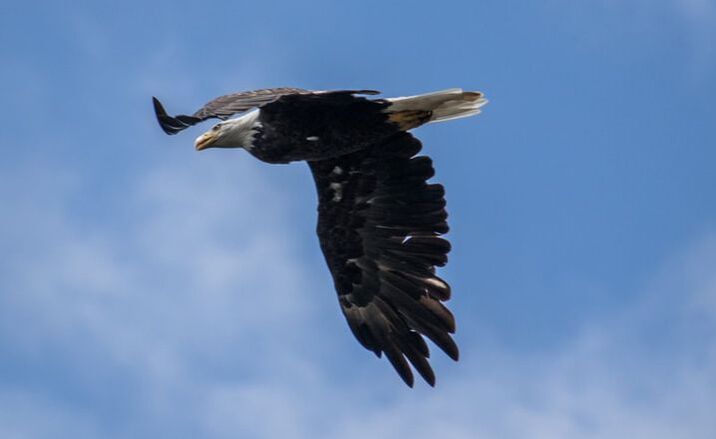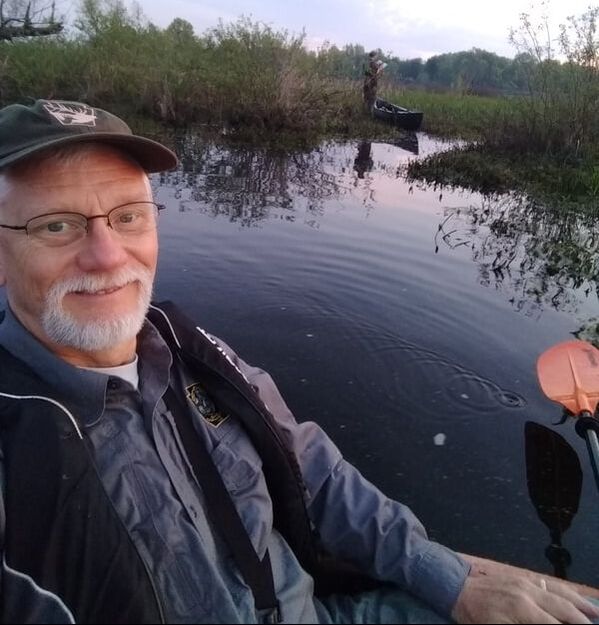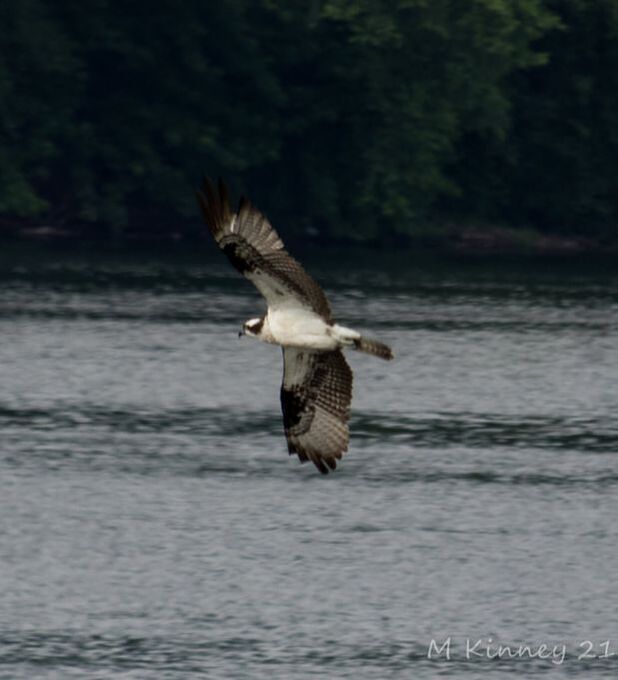|
The incredible successes of the state’s bald eagle, osprey and peregrine falcon recoveries offer important lessons to the greater cause of conservation and dealing with an intimidating set of newer environmental threats, according to Dan Brauning. “There are currently a lot of eagles around Pennsylvania – I never imagined we would have them as widespread as we do today, especially since these species were at the brink of extinction. At least regionally, they were really gone,” Brauning, the recently retired supervisor of the Pennsylvania Game Commission’s Wildlife Diversity Program, said during a recent interview on the Middle Susquehanna Riverkeeper Podcast. “It took a long and steady dedicated effort to successfully bring them back to their ecological place in our region. The very fact that that we have been able to bring these birds – or any animal – back from the brink is really heartening. It shows us that a dedicated effort can be successful and is not a waste of time.”
“Recovery really began as far back as care for the waterways improved. The Susquehanna is a productive river rich in fish supply and both ospreys and eagles depend on those supplies,” Brauning said. “As legislation such as the Clean Water Act and various conservation efforts improved the waterways, it helped bring back the natural fish populations which paved the way for the recovery of these birds of prey species. Another lesson learned from this bigger success is that legislative and conservation initiatives – when working together – really can make a difference.”
Falcons provide gateway to success Brauning’s initial experiences involved the peregrine falcon reintroduction. He took a year out of grad school in 1982 to assist with an effort to bring peregrine populations back to Philadelphia. “This was a pretty novel process at the time. We would release captive-bred peregrine falcons into various environments – including urban areas – and used a traditional falconry technique called hacking,” he said. “This means basically raising a bird until it can acclimate to the area, and then releasing them and continuing to feed them until they become fully independent.” It is a process with which falconer Mike Dupuy, from Snyder County, is fairly familiar. “The bird is housed in a box where can only see outward,” he said of hacking programs he has conducted. “The food is dropped from the side so the bird gets it without ever seeing the falconer.” Seeing successes in the Philadelphia peregrine falcon efforts, Brauning oversaw similar programs in Harrisburg and Williamsport, among other locations throughout the state. “We augmented the regional population to get birds that wanted to stay in Pennsylvania because that was our goal,” he said. “While of most of the reintroduction of the bald eagles happened before my arrival (with the game commission), I was very involved in monitoring and protection measures.” The resurgence has been an incredible process to witness from within the agency, Brauning admitted. “Eagle nest numbers today are likely what they were in early colonial times, although we don’t know for sure because there weren’t records back then,” he said. “You see eagle nests now scattered along both the West and North branches of the Susquehanna River. And ospreys, which seem to prefer more still waters, have been much more prevalent in the glaciated regions of northwestern and northeastern Pennsylvania along with some of the larger bodies of water to the south.” Evolution of environmental issues In more recent times, Brauning admits that environmental issues have changed quite a bit. “More extreme weather events seem to be the norm, and that creates a lot of stress on the overall system,” he said. “Habitat use has – and continues to be – a longstanding foundational question. Do we sustain the extensive forest networks that many wild animals need? If you look at bird species specifically, agricultural use and the transition into more urbanized life has drastically impacted populations.” Since his retirement earlier this year Brauning, a Montoursville resident, has spent quite a lot of time focusing on bird species both personally and via the Lycoming Audubon Society, including leading an educational program aboard one of the Middle Susquehanna Riverkeeper Association’s Floating Classroom programs last month. “One of the biggest threats to birds involves habitat for grassland species,” said Brauning. “Many of our rural residents are familiar with the meadowlark. It is traditionally a common bird in pastures and hayfields, but their populations have declined radically – as well as that of some of the more obscure sparrows such as the grasshopper sparrow.” The cause of that decline includes a change in farming practices over the course of time, he suggested. “I am loathe to put blame on the agricultural community because farmers feed the world, but a more intensive culture drives earlier and earlier harvesting of hay, which impacts the nesting opportunities for these species,” he said. “They are pushed further and further into marginal areas where land is left fallow.” He added that while major efforts have been made toward putting aside agricultural land for some natural activities, “the program is usually driven by economics, and those economics can be very demanding these days. Ultimately, these species are part of the natural ecosystem we are losing, and it will be a tragedy if they continue to disappear.” Bonding with birding Brauning’s fascination with birds began as a child growing up in a row house in Philadelphia. “Early on, the concrete jungle didn’t appeal to me, so I wandered through the parks of Philadelphia, and I developed an appreciation with birds early on,” he said. “I call them feathered jewels of God’s creation. They’re beautiful, they’re fascinating, they’re even challenging to learn sometimes so there is a certain competitive challenge to them. I’ve really been blessed to pursue my love of birds as a career and make a contribution.” Bird watching has doubled in interest since the start of the pandemic, Brauning suggested, as lifestyles have changed and people are forced to stay at home. Birds, he added, provide a direct connection to our natural world. “As I sit on my patio and look at the trees and hear the birds, I’m so grateful for something as familiar as the Cardinal. It’s beautiful, and we can get a joy from just seeing the created world that comes right into our backyard,” he said. “Birds are also so diverse that they can lead us further and further into a greater study and diligence of exercise that can challenge us. Overall, it gives us such an important connection to the natural world.”
7 Comments
5/22/2023 05:39:33 pm
Your article truly highlights the importance of long-term, dedicated conservation efforts. As Brauning wisely points out, persistence is key, and the results of the Pennsylvania Game Commission's Wildlife Diversity Program are a testament to that fact.
Reply
4/17/2024 09:16:12 pm
What a breath of fresh air this blog post is! Your optimism leaps off the screen and fills me with renewed hope.
Reply
Leave a Reply. |
AuthorsRiverkeeper John Zaktansky is an award-winning journalist and avid promoter of the outdoors who loves camping, kayaking, fishing and hunting with the family. Archives
July 2024
Topics |




 RSS Feed
RSS Feed